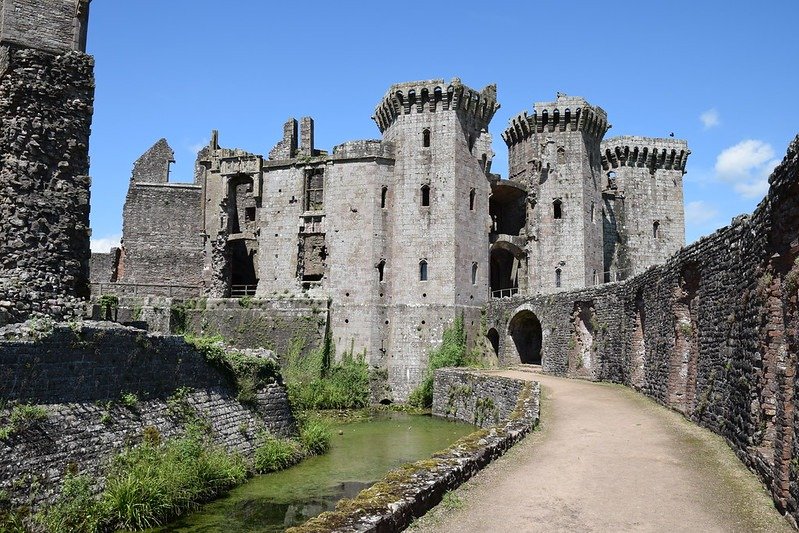Raglan Castle, Monmouthshire

Features
- Audio-visual presentations
- Chapel remains
- Closet Tower
- Fountain Court
- Gift shop artifacts
- Great Hall ruins
- Guided-tour materials.
- Hexagonal Great Tower
- Interpretive panels
- Medieval moat
- Pitched Stone Court
- Renaissance garden earthworks
- South Gatehouse with machicolations
- Tudor wooden panelling
- Visitor Centre displays
Description
Raglan Castle crowns a ridge north of the village of Raglan in Monmouthshire, Wales. Begun by Sir William ap Thomas in 1435 and expanded by his son William Herbert, Earl of Pembroke, it evolved into a lavish fortress-palace between the 15th and early 17th centuries, complete with a moated hexagonal Great Tower (the “Yellow Tower of Gwent”) and ornate machicolations over its South Gatehouse.
Visitors today enjoy a modern Visitor Centre tucked into the ruined White Gate, offering level access, interpretive panels, a gift shop, toilets and picnic areas. On-site facilities include seasonal guided tours, audio guides (with induction-loop hearing support), a nearby café, free parking, electric vehicle charging points, baby-change and wheelchair hire.
Raglan’s defences were cutting-edge for its time. The flared machicolations allowed defenders to rain stones and boiling liquids on attackers below, while the concentric courts—Fountain Court and Pitched Stone Court—created layered obstacles. Garrisoned by 800 Royalist troops, the castle withstood a Civil War siege of ten weeks before falling to Parliamentarian forces in August 1646; its walls were then deliberately “slighted” to prevent further military use.
An intriguing discovery: during 20th-century restorations, workers found a length of Tudor oak panelling in a local cowshed. This carved wood, once looted after the siege, now forms a centerpiece of the Visitor Centre’s exhibition on Raglan’s vanished interiors.
Sir William ap Thomas—known as the “Blue Knight of Gwent”—championed both martial strength and architectural flair. A veteran of the Hundred Years’ War, he used his royal favour and marriage-brought wealth to create Raglan’s Grand Tower and reinforce Welsh loyalty to the crown, leaving a legacy that blended symbolism, status and defence.
Phot Credit: Hugh Llewelyn
Share
See on the Map
Contact Info
- 03000252239
- RaglanCastle@gov.wales
- cadw.gov.wales/visit/places-to-visit/raglan-castle
- Raglan Castle, Raglan, Usk NP15 2BT
